Back in 2018 at SIHH, Audemars Piguet showed a prototype that had the whole fair buzzing because it represented an astounding technical achievement. It was called the RD#2, and it was an automatic perpetual calendar whose claim to fame was its amazing slimness. It was hailed by many as one of the best watches of the fair, despite the fact that it would not be possible to buy one as it was a concept watch.
Well, the prayers of the patient have been answered with the launch of the same watch, albeit with some slight differences and now christened with the overtly straightforward “Royal Oak Selfwinding Perpetual Calendar Ultra-Thin” (ref. 26586IP.OO.1240IP.0). Maintaining the technical features of the RD#2, the watch has a movement measuring in at 2.89 mm in thickness and a case of 6.3 mm in height. What does this mean? Well, quite simply, it is now the world’s thinnest automatic perpetual calendar wristwatch that you can buy.
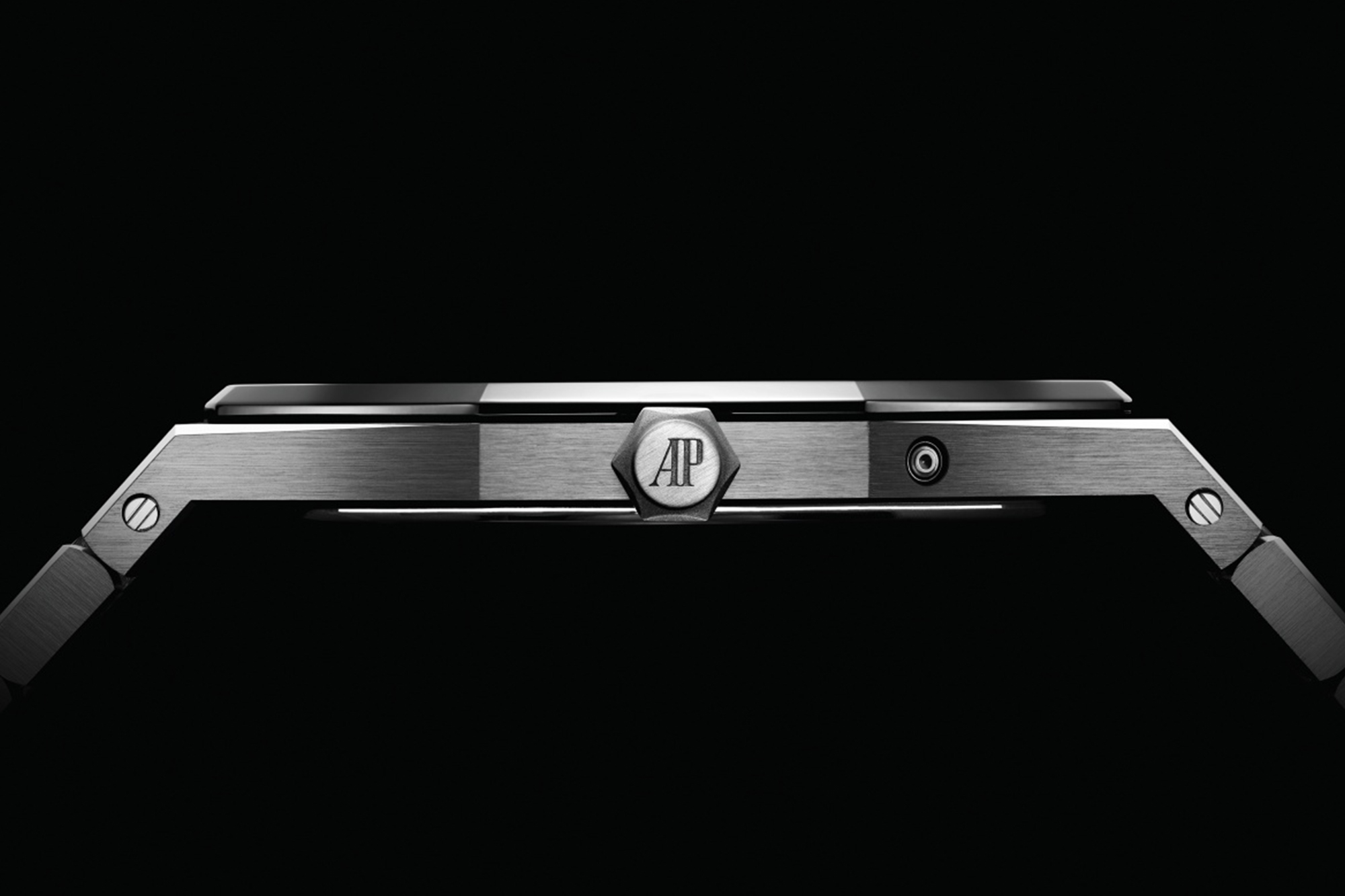
Let’s put this in context with some actual examples – a Rolex Submariner, a watch that many would be familiar with is 13.0mm thick, which is about normal for a typical sports watch. Keep this in mind when considering the record-holders in the ultra-thin category. Right now, the world’s thinnest watch is the Jaeger-LeCoultre Master Ultra Thin Squelette at 3.60 mm, followed behind by the previous record holder, the Piaget Altiplano 900P, at 3.65mm. If we’re talking ultra-thin wristwatches with tourbillons, there is the Bulgari Octo Finissimo Tourbillon, which comes in at 3.95mm. Now, if we add complications such as a minute repeater, we find that the record-holder is the Bulgari Octo Finissimo Minute Repeater at 6.85mm thick.
Now consider the new Royal Oak Selfwinding Perpetual Calendar Ultra-Thin at 6.3mm thick, and consider what it has achieved in the context of the others mentioned above. First of all, while it may best the world’s thinnest minute repeater, the Bulgari Octo Finissimo Minute Repeater at 6.85mm thick compared to 6.3mm, it does so with an automatic rotor, which the former doesn’t have.
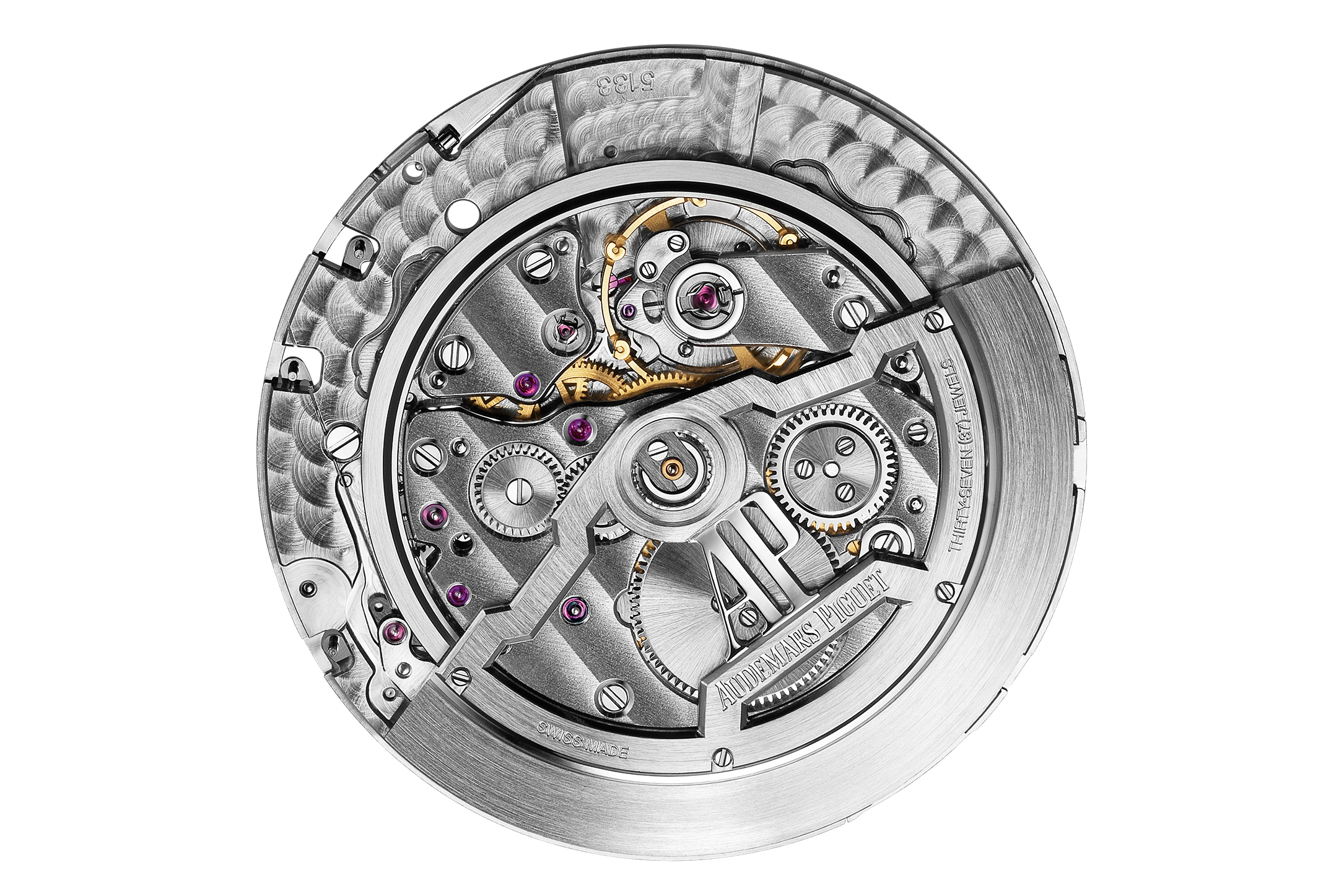
In fact, note that all the watches mentioned above are manual winding, meaning that they do away with an automatic rotor, which helps to remove one layer from the movement, and so achieve better thinness.
Then if we think how perpetual calendars have always required extra layers on the movement on top of the basic gear train, mainspring and balance wheel, with these parts mounted on the dial side for the calendar indications, we realize how quickly that height can add up in one.

So how has the new Royal Oak Selfwinding Perpetual Calendar Ultra-Thin achieved its record breaking slimness? In a word – simplification. Perpetual calendars basically work by transferring time information, starting with the individual beats from the balance wheel, to the seconds, minutes and hours, and then onward to the date, the month and the current position on the leap year cycle. It is those parts after the basic gear train, or the hour wheel, that reveals the complexity of what it required to achieve a perpetual calendar. At its heart, it is due to the differing number of days in a month and also the need to adjust for the leap year.

Take a look at most other perpetual calendar movements and one finds that the parts required are normally arranged on multiple levels, all to manage the flow of the time information all the way down the line.
What has the new Royal Oak Selfwinding Perpetual Calendar Ultra-Thin done then? Well, basically to merge all these parts into a single layer.
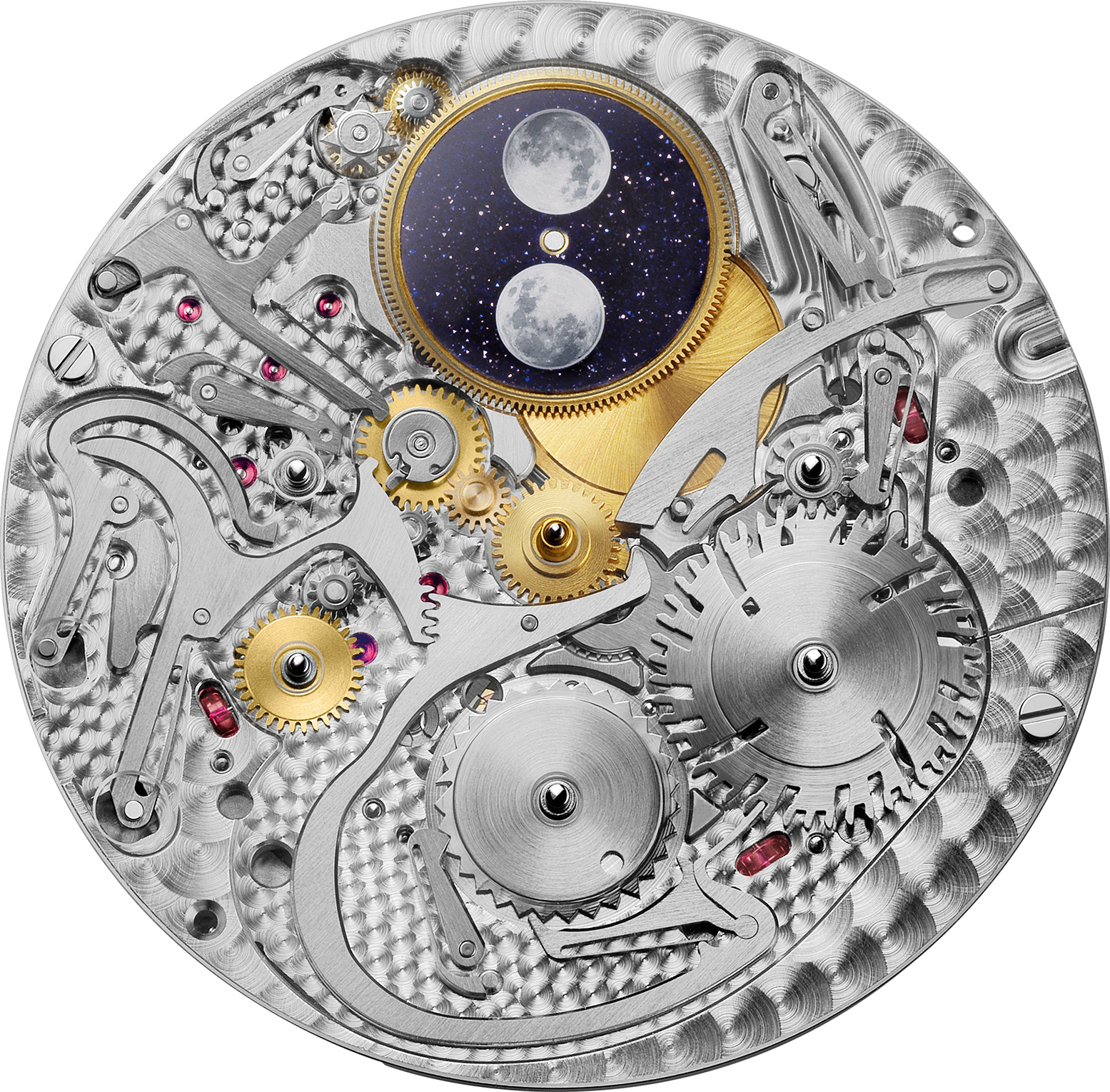
Take a look below at the Calibre 5133 and you will find that it is strangely very flat. Two pioneering and patented innovations are also visible here, the end-of-the-month cam, which has been integrated to the date wheel, and the month cam, which is combined with the month wheel.
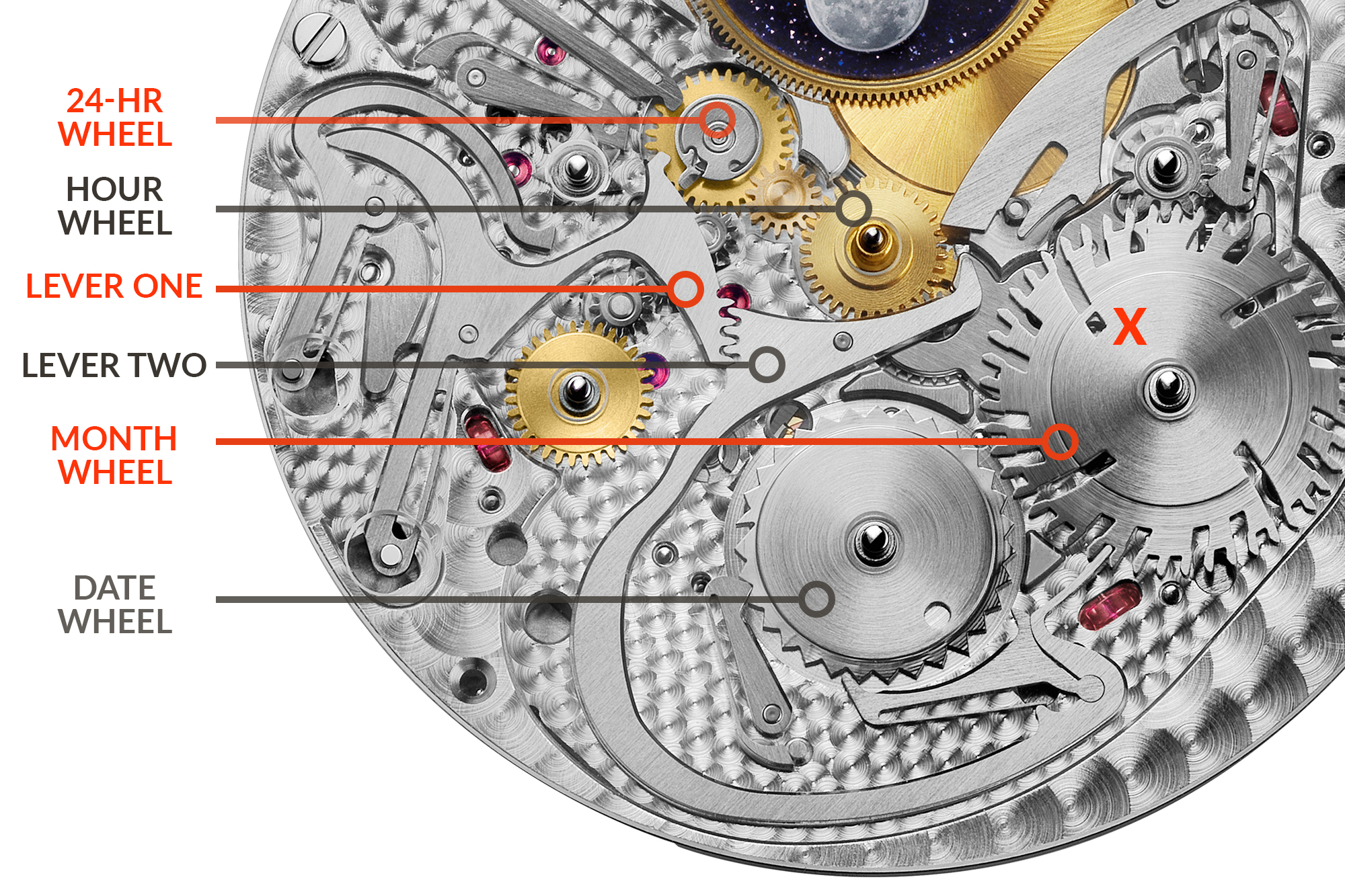
Starting from the hour wheel in the middle, which has to complete two (12-hour) revolutions to make 24 hours, this is connected to the 24 hour wheel, which pushes lever 1 and lever 2, and advances the 31-tooth date wheel by one increment. The date wheel here has one tooth that is in a different shape than all the others and it is the way that the mechanism reads that it is the end of the month, which helps to advance the month wheel by one increment.
Moving further, we find that the month wheel has many notches in it, with the height of each notch representing the length of each month. These stand for all the 36 months within a 4 year cycle, with each notch representing the length of the month. Shallow notches represent 31-day months, while those slightly deeper represent 30-day months. Those with the deepest notches represent the 28-day long February months of each year, and there are three of those, with the last remaining one, (marked to the right of it with a red X) that represent the only February with a 29 day month.
Of course, while this is a simplified explanation for what you can see in the movement since there are other things going on that make all this work. What is clear however is that to place everything on one level, the geometry of each component has also been optimised, reducing adjustment and assembly time, another advantage to the new design.

The dial, too, has been redesigned compared to previous Royal Oak Perpetual Calendar models (such as ref. 26574), with the day, date and month sub-dials being enlarged for optimum legibility, while the night and day indication at 8 o’clock has been added symmetrically to the leap year indication positioned at 4 o’clock.
Aesthetically, the new Royal Oak Selfwinding Perpetual Calendar Ultra-Thin differs quite a bit from the concept RD#2, and it is in the case material and dial aesthetics that we see significant change. The RD#2 for example had a platinum case and bracelet in the brand’s signature satin-finish and a blue “Grand Tapisserie” pattern on the dial. The new watch however departs from this more traditional look, mixing two materials that are not often used together – titanium and platinum in a very interesting way. With the polished surfaces in platinum and the satin-brushed in titanium, the watch maintains a high level of luxury with the platinum, yet combines performance advantage of titanium, achieving a lighter wearing experience on the wrist, with an appropriate level of shine.
More specifically the finishing for the case is satin-brushed titanium, and it is topped with a polished platinum bezel. The bracelet is also similarly mixed, with satin-brushed titanium and polished platinum central links, rounded off with a titanium folding clasp. Furthermore, while the dial still comes in blue, it is now in a satin-brushed finish, a choice that enhances legibility while matching the aesthetics of the case and bracelet.
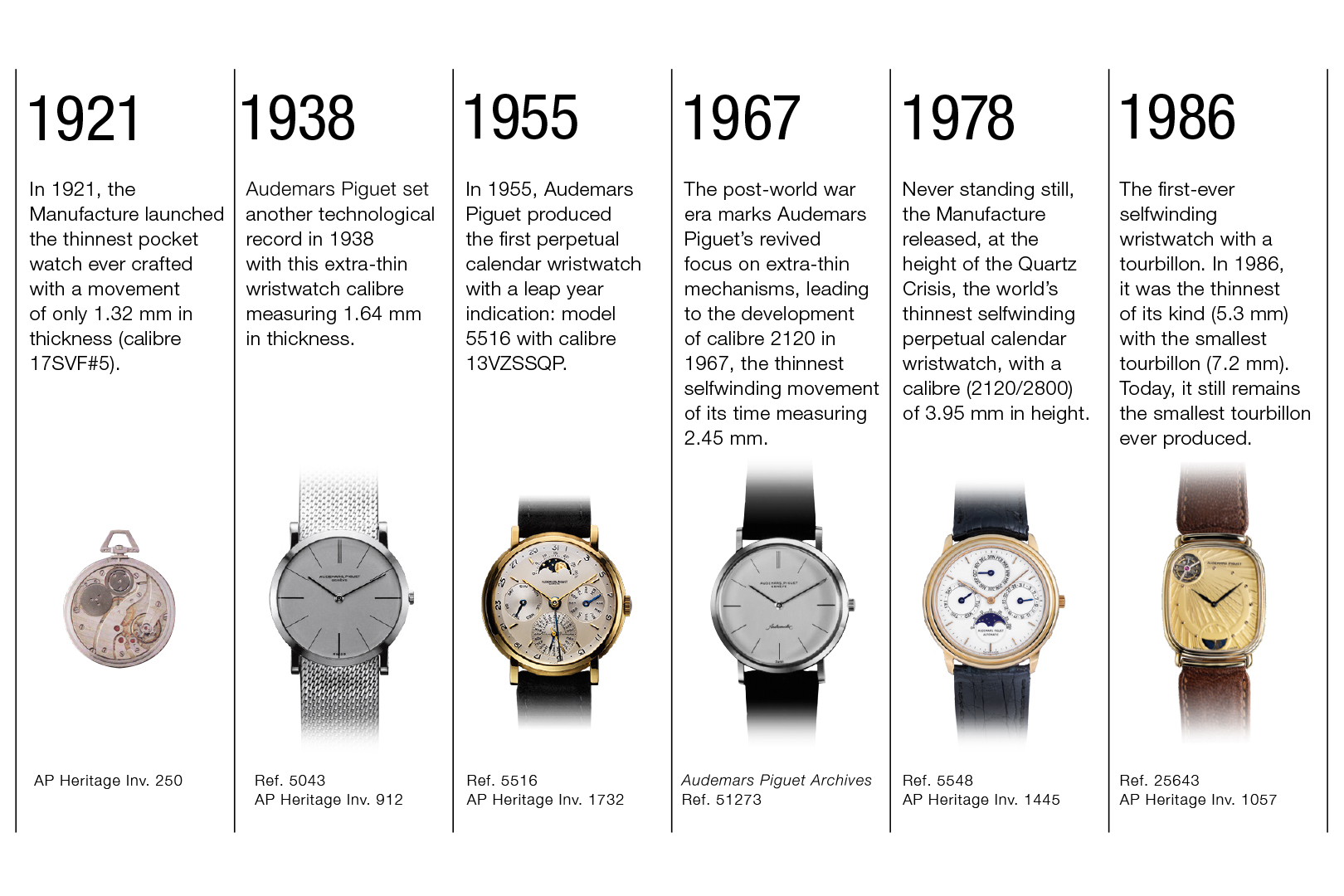
Overall then, this is an important release and a worthy addition to the brand’s history of ultra thin watches. Certain to be a hit with collectors, word on the street is that firm deposits have already been placed for the initial production, with some watches already finding their home on the wrists of proud owners.
[ninja_tables id=”1918″]


